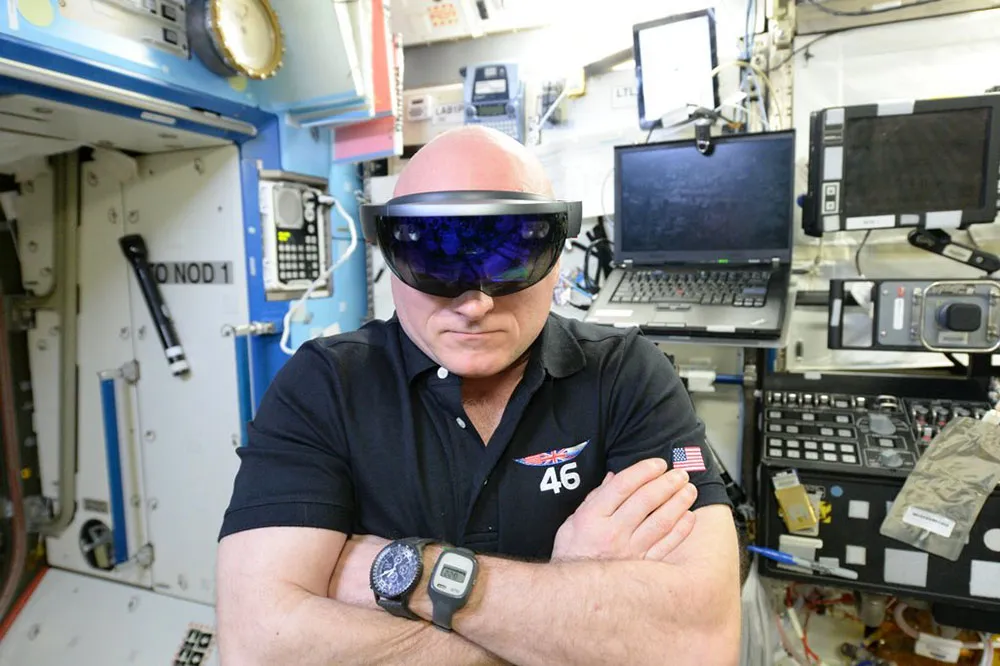Last June Microsoft’s HoloLens was heading to the International Space Station aboard a rocket on a resupply mission from SpaceX when an “RUD” event occurred. That’s a “Rapid Unscheduled Disassembly” in the terms of Elon Musk. In other words, it blew up.
In December, another resupply mission aboard Orbital ATK’s Cygnus spacecraft successfully put a set of HoloLens headsets in orbit bound for the space station. HoloLens is being used to pioneer NASA’s Sidekick project. The goal is to use mixed reality to allow NASA scientists, astronauts, and engineers to visualize and collaborate on tasks in a way that reduces training time and increases efficiency.
Astronaut Scott Kelly, the twin of retired astronaut Mark Kelly, went to space in March 2015 on a one year mission to study the effects on the human body of living long-term in space. Comparing the physical condition of the twins before, during and after the mission could yield valuable data about how humans can handle something like the journey to Mars. Astronauts perform a lot of experiments while in space, though, and while undertaking this larger mission Scott Kelly has popped out the HoloLens and is beginning to explore its capabilities.
This #saturdaymorning checked out the @Microsoft #HoloLens aboard @Space_Station! Wow! #YearInSpace pic.twitter.com/OZlWmzWjsY
— Scott Kelly (@StationCDRKelly) February 20, 2016
We previously reported that Jeff Norris of NASA’s JPL took the stage at Unity’s Vision Summit where he discussed the ongoing efforts to incorporate VR and AR technology into its projects. One day, everyone should be able to walk on Mars using mixed reality technology. Project Sidekick and HoloLens, though, are about helping astronauts with their work in space right now and there are two modes to make that happen.
The first, “Remote Expert Mode,” uses Skype and allows ground crews to see exactly what an astronaut is dealing with in space. A team member on the ground can then assist the astronaut in real-time with repairs and procedures while making annotations directly into the astronaut’s field of vision.
The second, “Procedure Mode,” is a sort of augmented reality guide for astronauts that overlays holographic tutorials over the systems in a spacecraft. The technology could dramatically lessen the amount of training an astronaut requires before going up. It could also help if an emergency repair becomes necessary and special procedures are required.
We can’t wait to hear more details of how the technology works in space and will bring them to you as soon as NASA releases them.


























